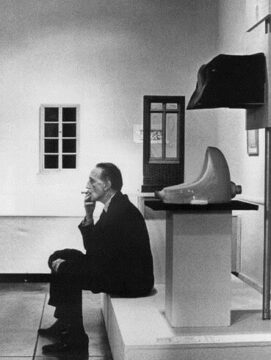Thierry de Duve and Barry Schwabsky at Artforum:
 SCHWABSKY: Why a telegram?
SCHWABSKY: Why a telegram?
DE DUVE: Of course, “telegram” is a metaphor. What constitutes the telegram is a double-page spread in a little artists’ magazine called The Blind Man no. 2, published in May 1917, just after the first show of the Society of Independent Artists closed. It reveals that a hidden act of censorship had occurred at the exhibition. The motto of the Society was “No jury, no prizes,” with the result that anybody who had paid $6 dues as membership to the society was automatically an artist. The hanging committee was no jury: It had no right to reject what a member offered. And yet they rejected Richard Mutt’s entry, a men’s urinal named Fountain. Crucial is that no scandal occurred during the exhibition. The revelation that an act of censorship had happened came about only after the exhibition closed. So this telegram was mailed in 1917. It arrived only—roughly said—in the ’60s. That is when we begin to speak of a post-Duchamp art world. Nobody has ever spoken of a post-Picasso art world. Why does everybody speak of a post-Duchamp art world?
more here.
